RealSense
Latest
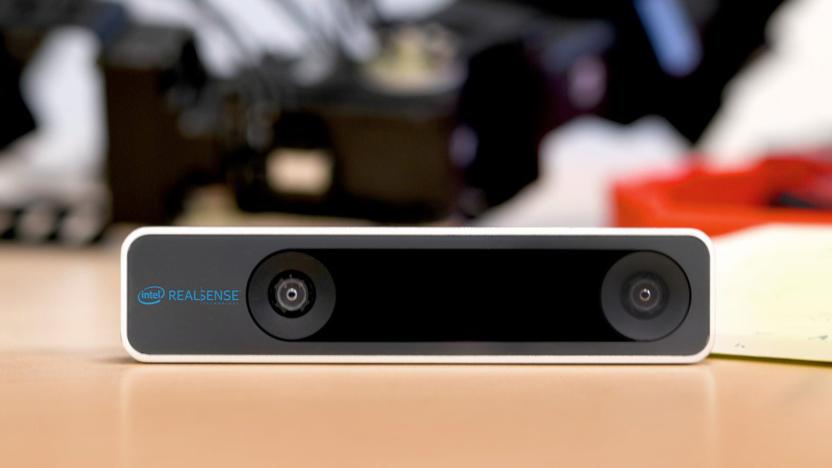
Intel is giving up on its AI-powered RealSense cameras
Intel is closing its RealSense camera business to focus on its chip manufacturing efforts, although the technology won't disappear.

Intel is using its RealSense tech for facial recognition
RealSense ID could be used to provide access to ATMs, smart locks and more.
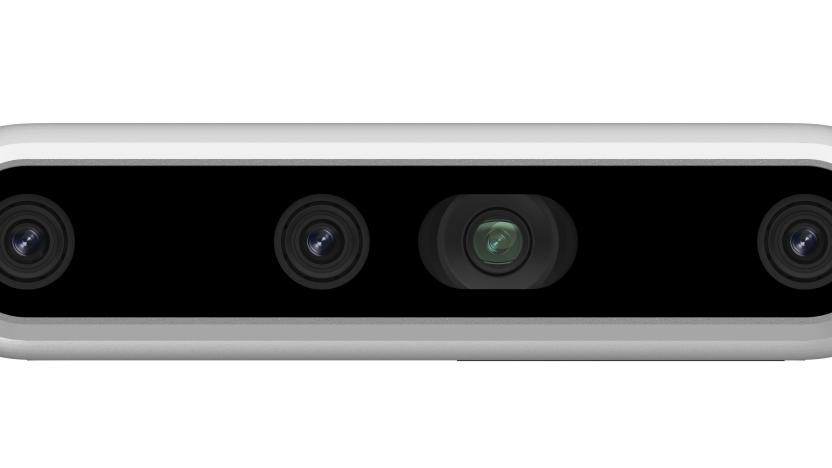
Intel's latest RealSense depth camera has twice the range of previous models
Intel's latest RealSense camera has twice the range and precision of previous models.

Intel RealSense tracking camera helps robots navigate without GPS
Intel is back with another RealSense camera, but this one has a slight twist: it's meant to give machines a sense of place. The lengthily-titled RealSense Tracking Camera T265 uses inside-out tracking (that is, it doesn't need outside sensors) to help localize robots and other autonomous machines, particularly in situations where GPS is unreliable or non-existent. A farming robot, for instance, could both map a field as well as adapt on the fly to obstacles like buildings and rocks.

Intel's new cameras add human-like 3D vision to any machine
Intel has released two ready-to-use RealSense depth cameras, the D415 and the D435, that can add 3D capabilities to any device or machine. They both come in a USB-powered form factor and are capable of processing depth in real time, thanks to the chipmaker's new RealSense vision processor D4. The models work indoors and outdoors in any lighting environment, so they can be used for almost any machine that needs a depth camera. Those include drones meant to soar the skies and robots with AR/VR features.

Wacom's new hybrid tablets pack power and a more accurate stylus
Wacom is no stranger to standalone graphics tablets. After years of outfitting artists with pen tablets and displays for working on a desktop machine or laptop, the company debuted both Android and Windows versions of the Cintiq Companion in 2013. A year and a half later, Wacom revamped the Windows version with the Cintiq Companion 2 in early 2015. Now the company has another take on the standalone tablet that doubles as a pen display: the Mobile Studio Pro. Wacom actually refers to new duo as "mobile pen computers," but they still carry the appearance of a large tablet.
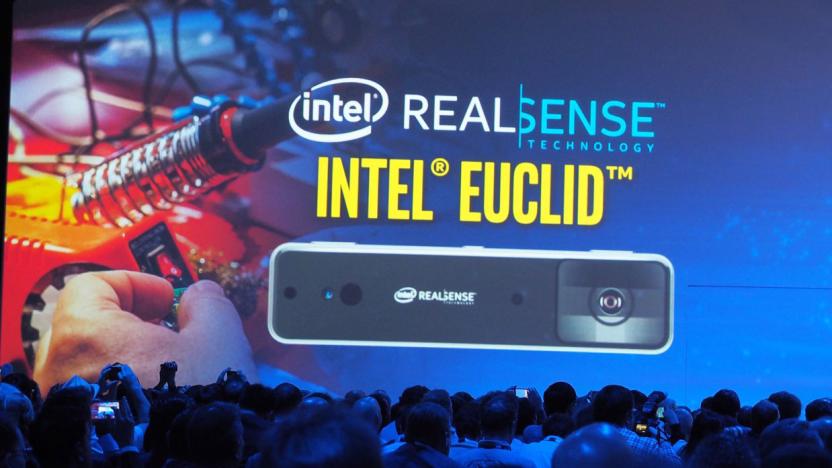
Intel buys Movidius to build the future of computer vision
Intel is making it extra-clear that computer vision hardware will play a big role in its beyond-the-PC strategy. The computing behemoth has just acquired Movidius, a specialist in AI and computer vision processors. The Intel team isn't shy about its goals. It sees Movidius as a way to get high-speed, low-power chips that can power RealSense cameras in devices that need to see and understand the world around them. Movidius has already provided the brains behind gadgets like drones and thermal cameras, many of which are a logical fit for Intel's depth-sensing tech -- and its deals with Google and Lenovo give nothing to sneeze at, either.

Intel's Euclid is a RealSense PC the size of a candy bar
Intel has just announced Euclid, a unique all-in-one RealSense device that's packed in the size of a candy bar. As CEO Brian Krzanich said on stage at the Intel Developer Forum keynote, this is essentially an easy way to bring sensors to any robot. The Euclid packs in a camera, an Atom processor, onboard communications, a battery and even a self-contained PC running Ubuntu Linux and Robot OS. Think of it as a robotics platform you can put in your pocket.
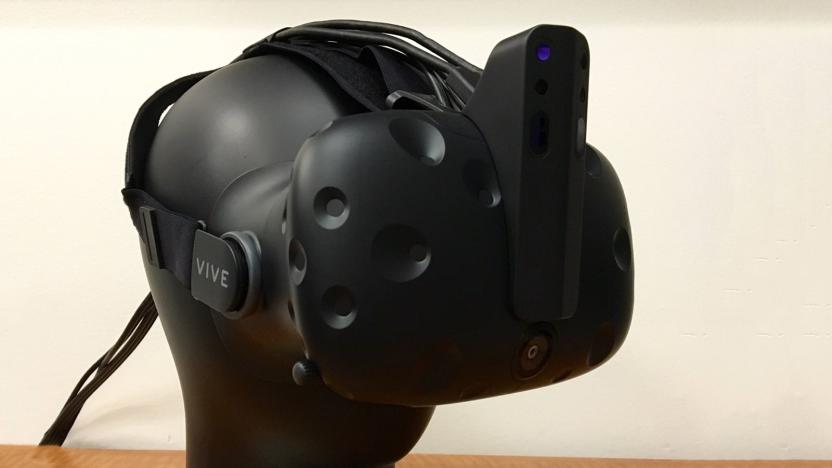
Intel scientist teases depth-sensing 'horn' for HTC Vive
Intel scientist Dimitri Diakopoulos revealed a sneak peek of an interesting depth sensing camera that attaches to HTC's Vive headset. "I felt that VR needed a solid unicorn peripheral with six additional cameras," he tweeted. The device, presumably based on Intel's RealSense tech, may be designed to track your hands or keep you from bumping into things. He mentioned that each camera weighs 10 grams (0.35 ounces), and said the design maintains the headset's original balance point.

Yuneec's 3D-sensing drone is available for pre-order
Have you been curious to see how a drone fares when it has Intel's depth-aware RealSense tech onboard? You now have a chance to find out first-hand. Yuneec has started taking pre-orders for the Typhoon H, its first drone with RealSense built-in. Plunk down $1,899 ($100 more than mentioned in January) and you'll get a hexacopter that uses Intel's camera system to map its environment and avoid obstacles while it records your adventures. You'll also get 4K video, 12-megapixel still shots and a 7-inch Android-based controller. It's a lot to pay, and you'll have to endure a 4-week wait if you're in the first wave, but look at it this way: the money you spend now might save you from a nasty tree collision in the future.
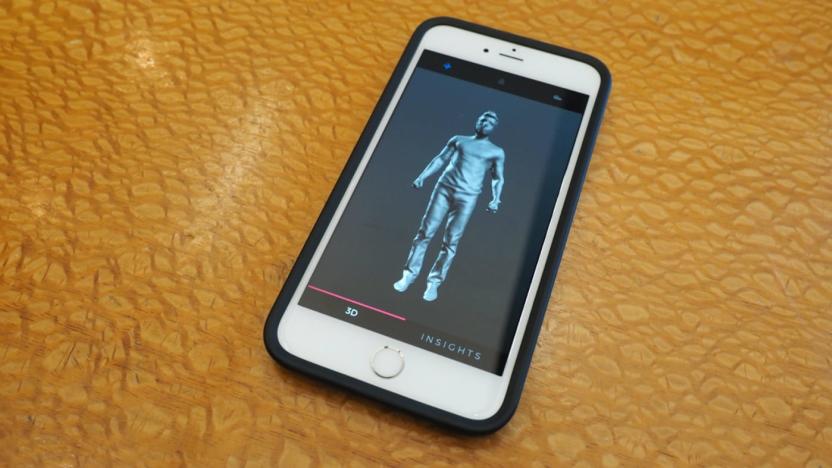
Smart mirror scale measures your volume as well as your weight
Guess what fitness startup Naked Labs wants you to do. The company today debuted its first product: a smart scale system that scans users with lasers, enabling them to track their fitness goals in three dimensions. The $500 system is designed for in-home use and is comprised of three parts: the scale itself, which doubles as a turntable; a full-length mirror outfitted with Intel RealSense depth sensors and the "Naked" mobile app. To initiate a scan, users first stand on the scale in their skivvies. It will begin to rotate as the mirror measures their body volume and sends that information to the associated app. The entire process takes about a minute.
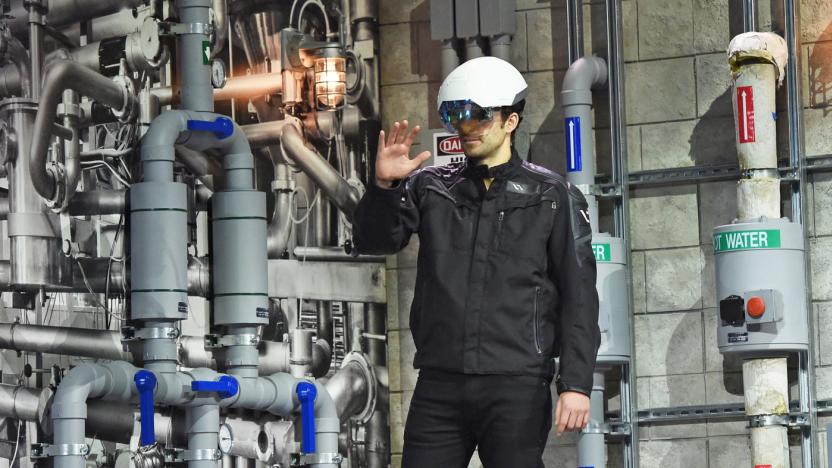
WSJ: Intel is building its own augmented reality headset
As the craze over both augmented and virtual reality heats up, it looks like another big name tech company is stepping into the fray. Wall Street Journal reports that Intel is working on an augmented reality headset of its own, looking to employ its RealSense 3D camera tech to help the device stand out. If you'll recall, the company's imaging tech is already being used to improve the vision of drones and object detection in phones. According to WSJ, the augmented reality project will help Intel further expand beyond the confines of personal computing, following its big push into wearables over the last few years.

Intel's latest ads move beyond the PC
There's no doubt that the PC market is in trouble. And for Intel, that's a real problem -- how do you market yourself when your bread-and-butter processor business is on the decline? By showing what else you can do, apparently. Intel is starting an "Experience Amazing" ad campaign where PCs are just one part of the tech giant's larger picture. The promos show off everything from RealSense cameras (adding flair to the dance you see above) to a dress with Edison-powered butterflies. "See," the commercials shout, "it's not just a computer chip company!"

Intel's RealSense phone with Project Tango up for pre-order
We heard back in August that Intel was creating a Project Tango developer kit, which also happened to be the first phone to include its RealSense 3D cameras. Now, it's available for pre-order for $399 on Intel's website. The RealSense Smartphone Developer Kit, as its officially called, packs in a 6-inch screen, Atom X7-Z8700 processor and 2 gigabytes of RAM. But its real unique feature is its array of 3D cameras, which can be used to detect objects, gestures and map space in three dimensions. There's no telling when Intel will start shipping out the dev kits, and right now it's only offering them in the United States.

Yuneec Typhoon H drone uses Intel tech to avoid collisions
DJI-rival Yuneec has a new hexacopter under its Typhoon line of drones, and it's compatible with a collision avoidance module based on Intel's RealSense technology. Intel CEO Brian Krzanich demonstrated the drone during the company's CES keynote today, where the audience watched it successfully navigate an obstacle course and avoid a falling tree in its path. Krzanich even claimed that it's the "first truly intelligent consumer drone." Before its performance on the CES stage, though, the tech corporation sent it to Mexico for some real-world experience.

I had to smile for my free cup of coffee at a trade show
#fivemin-widget-blogsmith-image-601847{display:none;} .cke_show_borders #fivemin-widget-blogsmith-image-601847, #postcontentcontainer #fivemin-widget-blogsmith-image-601847{width:629px;display:block;} try{document.getElementById("fivemin-widget-blogsmith-image-601847").style.display="none";}catch(e){} Coffee, pens, non-existent free WiFi, and USB sticks are the four spirit animals of any tech show. But what if a company wants you to be happy before you've got your cup of morning sunshine? That's DigitalSTROM's gambit, using its sensors and Intel's RealSense 3D camera to detect when you're smiling before delivering your daily caffeine hit. Sensing a grimace could prove more practical.

Acer's all-in-one has Intel's latest chips and depth camera
Laptops are the biggest winners with Intel's less power-hungry Skylake chips, but desktop computers do get some perks. Acer has just launched the U5-710, a new all-in-one (AIO), that uses the new CPUs along with Intel RealSense cameras. The high-end Aspire U (U5-710) model gets the latest Core i5 or i7 sixth-generation desktop chips, most of which have four cores and a modest performance bump over the earlier Haswell models. They do use slightly less juice, however, and support up to 16GB of faster (and pricier) DDR4 RAM.

Intel and Google want your phone to see in 3D
Intel's RealSense camera tech can sense and scan three-dimensional objects, while Google's Project Tango sensors are adept at motion tracking and 3D-mapping. It just makes sense for the two to come together, which is exactly what was announced today at Intel's Developer Forum. The two have developed a smartphone and software kit that integrates both RealSense and Project Tango technologies, as can be seen in the hardware prototype seen here. While this handset is strictly for developers at the moment, it offers a pretty good early look at what could potentially be in consumer phones later on.

Razer's 3D-sensing camera brings motion tracking to your games
Razer has been big on immersive gaming as of late, and it's reinforcing that by unveiling a 3D-sensing camera at the Intel Developer Forum. The ominous-looking gadget uses Intel's RealSense to track your movement in games, whether you're sitting at a desktop or sporting a VR helmet (including Razer's own OSVR, naturally). For example, it can follow your head movements when you look to the side in a race car's cockpit. There aren't many more details to speak of just yet, but this hardware should arrive in the first quarter of 2016.

Google and Intel bring RealSense to phones with Project Tango dev kit
It was only a matter of time until Intel's RealSense 3D camera got a chance to dance with Google's 3D-mapping initiative, Project Tango. Today at Intel's Developer Forum, the two companies revealed that they're working together on a Project Tango developer kit for smartphones using RealSense. From what we can tell, it looks like a fairly standard smartphone with a 6-inch screen, except it has a slew of cameras on the rear. The news follows Intel's unveiling of a smartphone-friendly RealSense sensor back in April -- up until then it was mainly something we saw on laptops and all-in-one PCs -- as well as a Project Tango phone concept from Qualcomm. Along with the Project Tango tablet dev kit Google unveiled last year, the RealSense-powered kit should give developers a better idea of how to create 3D-mapping apps. We're still in the early stages of depth-sensing technology, but it has the potential to improve the way we handle things like indoor mapping, scanning environments or creating VR spaces. Intel says the dev kits will be sent out to Android developers at the end of the year.









